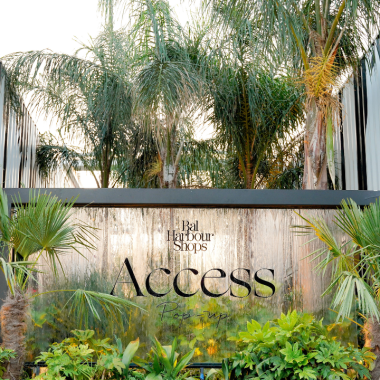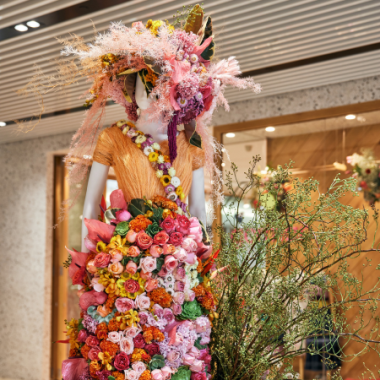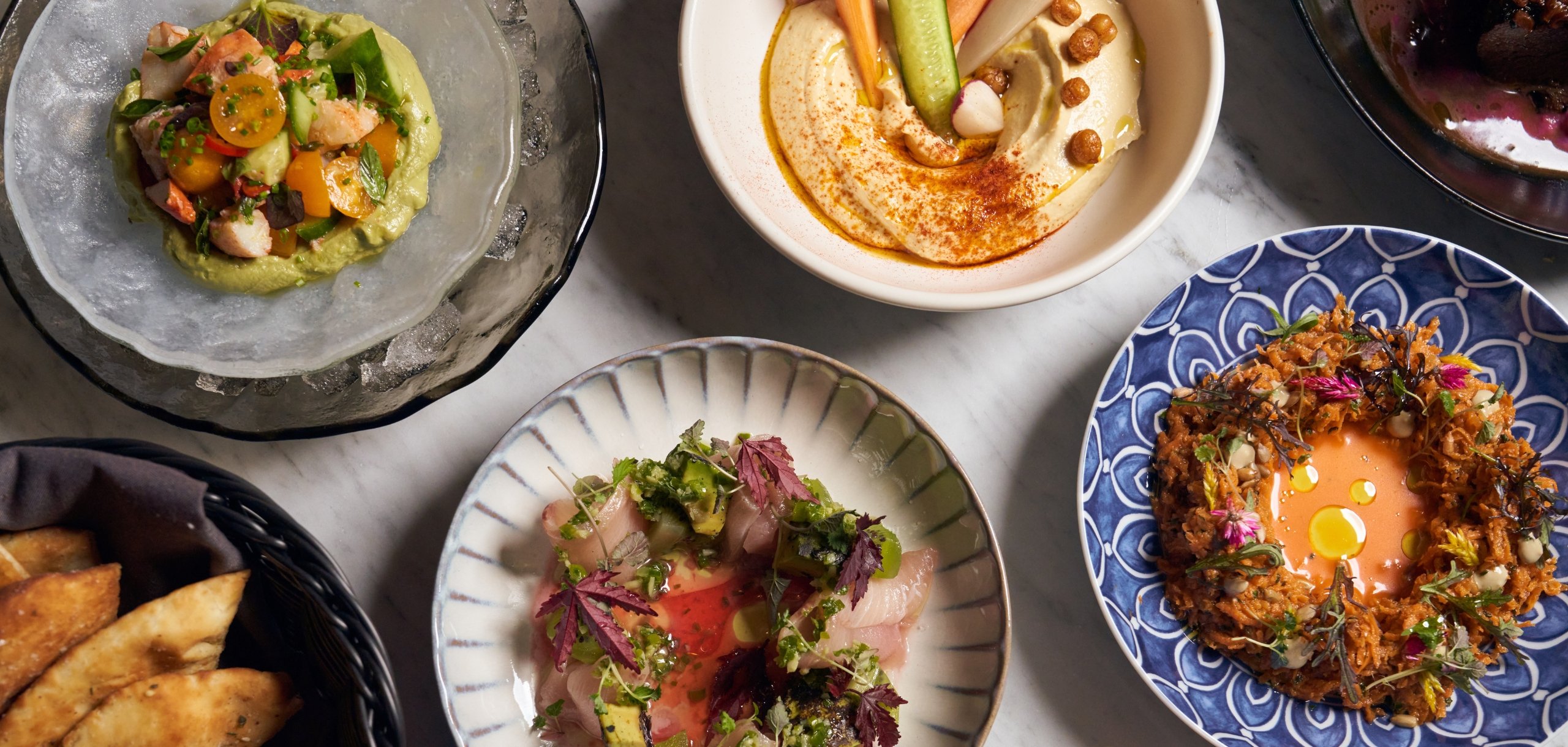
Aba’s menu draws from traditional Mediterranean dishes
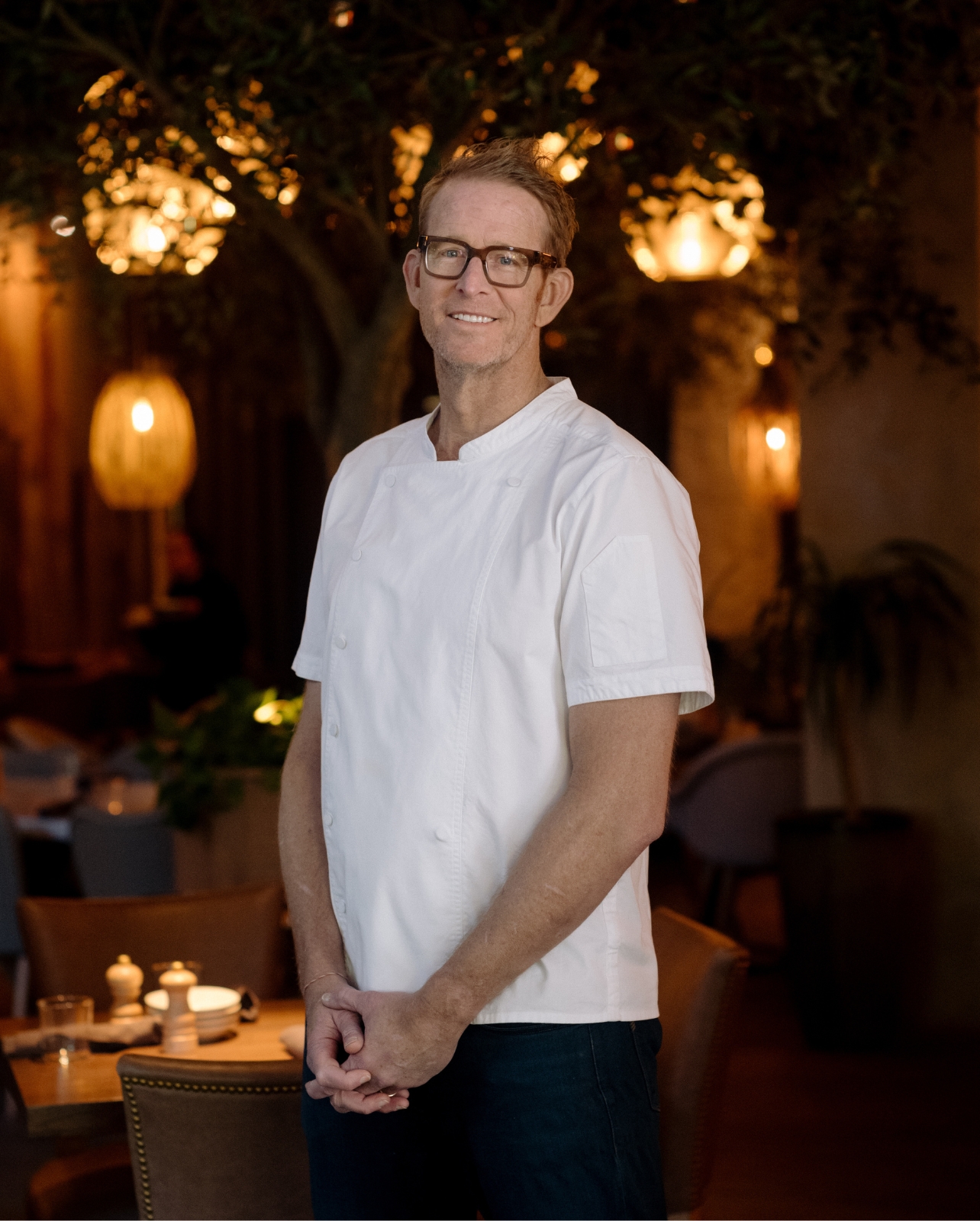
Aba Chef Partner CJ Jacobson; photo by Gesi Schilling
If you want to know what makes Aba, the Mediterranean restaurant at Bal Harbour Shops, different from other Mediterranean-Turkish-Aegean restaurants, consider the avocado-hummus and Maine lobster.
“I like Maine lobster,” says Aba Chef Partner CJ Jacobson. And avocado-hummus, he says, is a good example of his style. He grew up in California, not Beirut. “I don’t care who made up hummus, it’s going to be mine.” Because both avocados and chickpeas have a strong, mellow flavor, he combined them. So, Maine lobster, avocado-hummus, Fresno chili, Thai basil – that is what he means when he says Aba is “light” fare.
“Light as in bright,” he says. “With a lot of citrus, herbs, bright flavors.”
With a choice of spreads, dips, hot and cold mezze, and main courses, eating a vegetarian meal is easy. Hint: order the brussels sprouts with dukkah as a main course.
“I’m also inspired by Japanese food and Mexican Food. They all find their way into the menu,” he says.
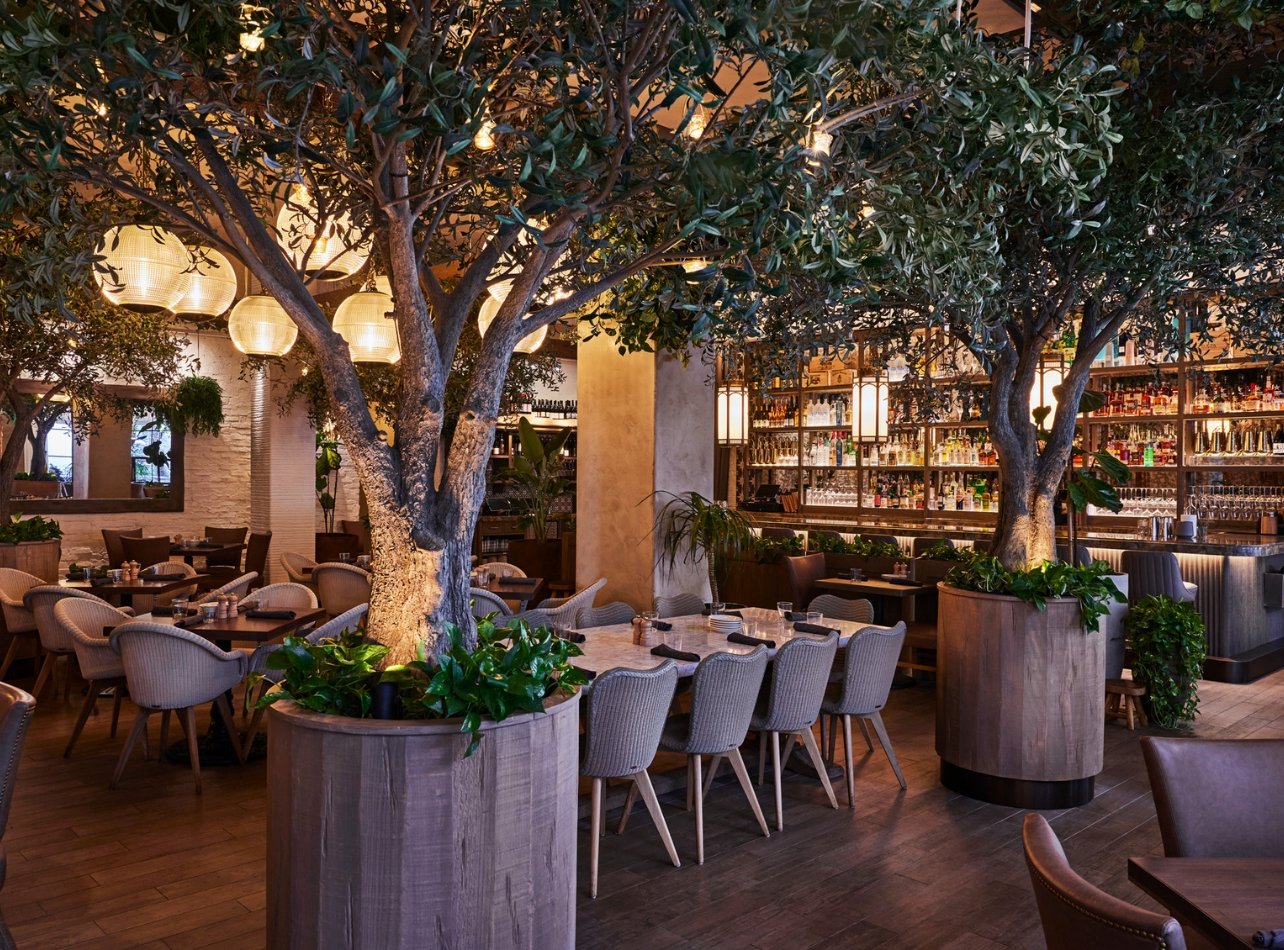
The restaurant’s design is as transportive as the cuisine
Jacobson lives with his wife in Chicago, where the Aba mothership is based, and a third Aba is in Austin, Texas. (Aba means “father” in Hebrew, and its sister restaurant, which opened in Chicago in 2017 Ema, which means “mother.”)
You might recognize Jacobson from his appearances on “Top Chef.” He’s the extremely tall guy, 6 foot 8, with glasses, who used to play volleyball professionally, and who won “Top Chef Duels” in 2014. He then trained as a chef at exquisitely disciplined places like Noma in Denmark, and at notable restaurants in California, his home state.
Aba creates its own za’atar spice. “We make it with dried oregano, thyme, sumac (which is tangy and acidic), toasted sesame seeds (which are nutty and rich) and salt.” Note, no marjoram, no cumin, no chili flakes. This is a simple and pure version. Ditto its labneh, which is also made in-house.
When asked what’s most popular on the menu, he notes a side dish, Crispy Potatoes paired with mizithra (a Greek cheese) and scallion crema, which was inspired by his childhood visits to the Spaghetti Factory, which served spaghetti with browned butter and mizithra.
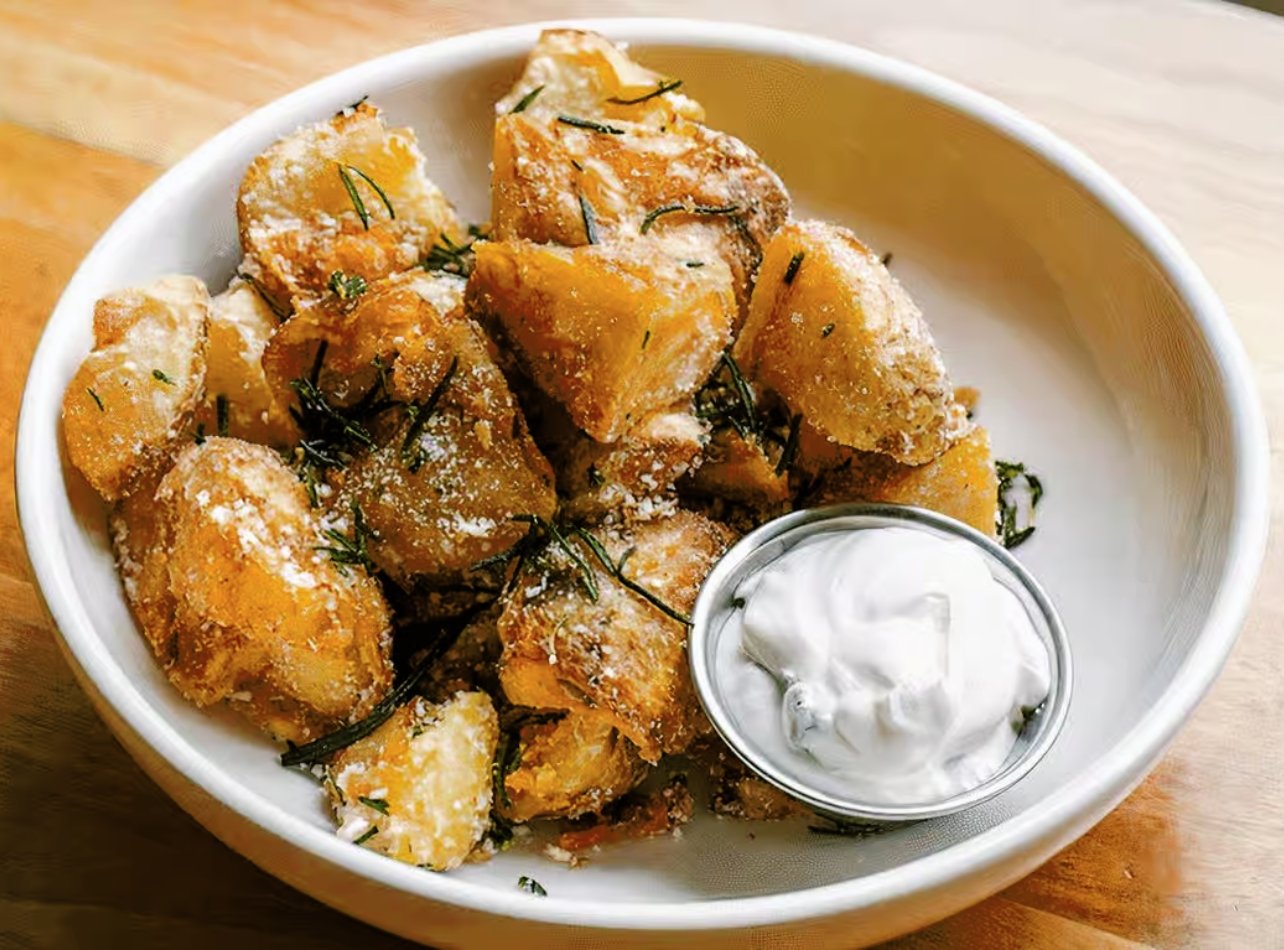
Crispy potatoes served with mizithra and scallion crema
And what is this Jerusalem bagel, which shows up at brunch? “Both have a hole in the middle,” he begins. “But that’s where the similarity ends. Jerusalem bagels are not boiled before baking, so they are tender and fluffy where regular bagels are dense and chewy.” Aba’s bagels are rolled in sesame, fennel, and nigella seeds.
Sounds great, but the restaurant serves a house bread that is even more addictive, a baked disk served with a choice of four varieties of hummus. It also accompanies Aba’s spreads (whipped feta; muhammara; that house-made labneh, which comes with butternut squash, pomegranate, honey and dried mint). And with salads and mezze, including their own stracciatella—a labor-intensive cheese that begins with high-quality mozzarella that is stretched and manipulated until long strings—the stracciatella—develop along with a rich burrata-like cream.
Besides all these dips and salads there are main courses: lamb chops, octopus, salmon, kebabs. And despite the raves for Aba’s frozen yogurt, Jacobson suggests diners make a braver choice: the chocolate cake with Isot chili pepper, whipped cream and chocolate sauce.
What would Jacobson himself order? Without hesitation he says, “The Charred Eggplant Spread. And the house bread.”
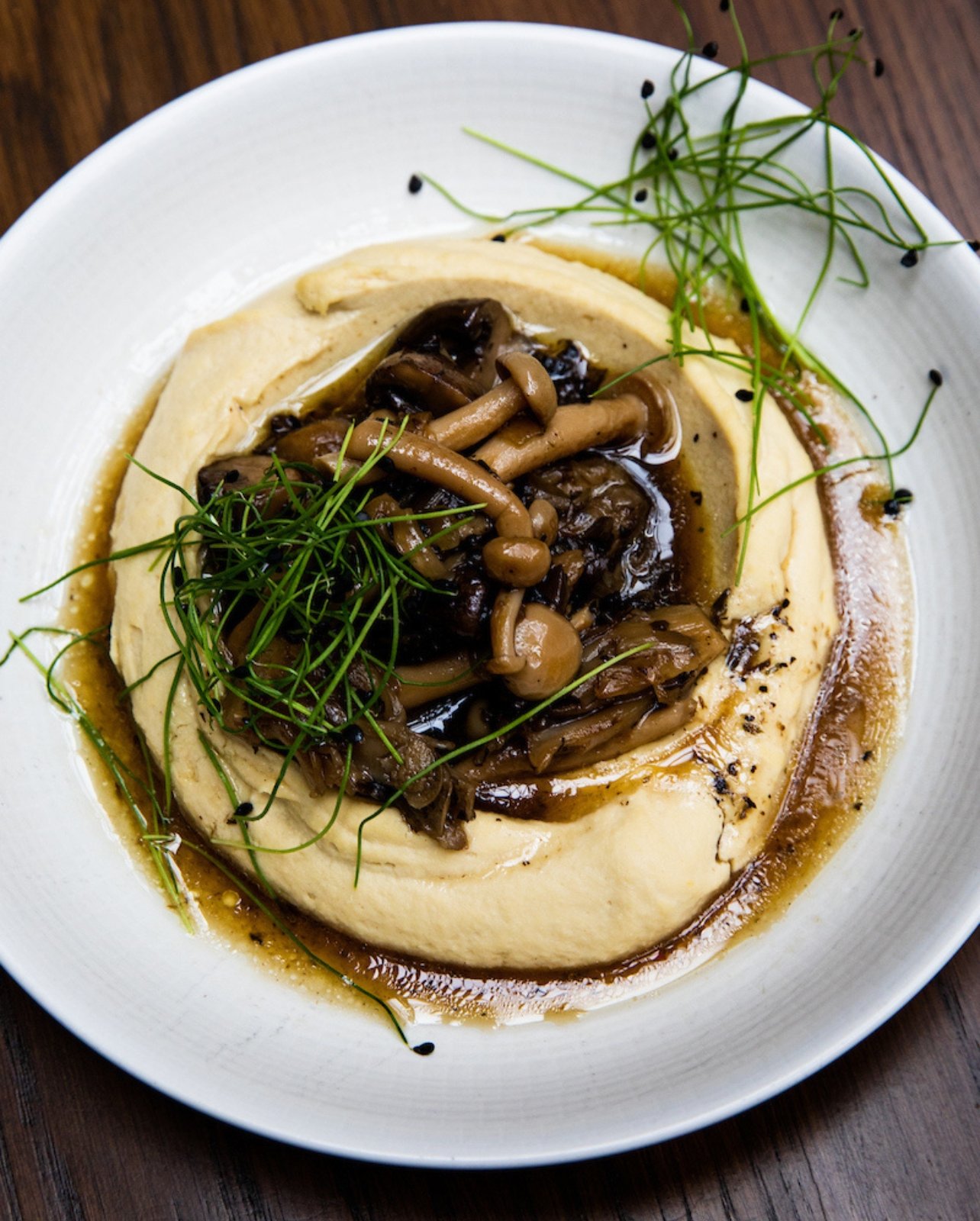
Aba’s Wild Mushroom Hummus
Want to try your hand at a signature Aba dish?
Chef CJ Jacobson’s Wild Mushroom Hummus ranks high on our list, and here’s how to make it.
INGREDIENTS:
Mushroom Stock:
2 cups Beech & Maitake mushrooms (cut into pieces, stems from mushrooms for ragu included)
Oil (as needed)
Water (as needed)
Truffled Mushroom Ragu:
1 package each white and brown Beech mushrooms (cleaned, reserve stems for stock)
1.5 packages Maitake mushrooms (cleaned, reserve stems for stock)
1.5 quarts Button mushrooms (quartered)
1 Shallot (diced)
2 cloves Garlic (minced)
Thyme (sprinkle)
2 tablespoons white wine
2 cups mushroom stock
2 tablespoons truffle Juice
2 tablespoons truffle
1 teaspoon truffle oil
½ stick butter
1 teaspoon Banyuls Vin
1 tablespoon lemon juice
Black Pepper (ground, as needed)
Canola Oil (as needed)
To prepare the Mushroom Stock:
- In a large bowl, toss mushroom pieces lightly with oil.
- Spread mushrooms pieces in a single layer on a sheet tray lined with parchment paper.
- Roast mushrooms pieces at 400 F until golden brown.
- Place roasted mushrooms pieces in a large pot.
- Add water until mushrooms pieces are submerged by a couple inches.
- Simmer for 45-90 minutes, or until the stock has a deep brown color and strong earthy flavor.
- Strain with a fine mesh strainer and vent.
- Refrigerate until needed.
To prepare the Truffled Mushroom Ragu:
- Clean mushrooms and set stems aside.
- Add canola oil to a large rondeau and heat through. In batches, add the cleaned mushroom tops and cook until browned. Set mushrooms aside.
- In the same pot, add more canola oil and sauté the shallots and garlic until fragrant, then add in thyme to taste.
- Add mushrooms back to the pot and add in white wine. Cook until the liquid has almost entirely evaporated.
- Add mushroom stock and bring to a simmer, then reduce the heat by half.
- Add truffle juice and cook for five minutes. Add in truffle pieces and butter, and stir.
- Finish with Banyuls Vin, lemon juice and pepper. Salt to taste. The final project should look closer to a ragu than a soup.
- Let cook and refrigerate until needed.
To prepare the Wild Mushroom Hummus:
- Scoop your hummus of choice into the center of a bowl and use the back of a spoon to make an indentation.
- Spoon the mushroom ragu into the center of the hummus. Add as much as desired.
- Garnish with garlic and chives to taste, and enjoy with warm bread!


